Global Strategy
advertisement
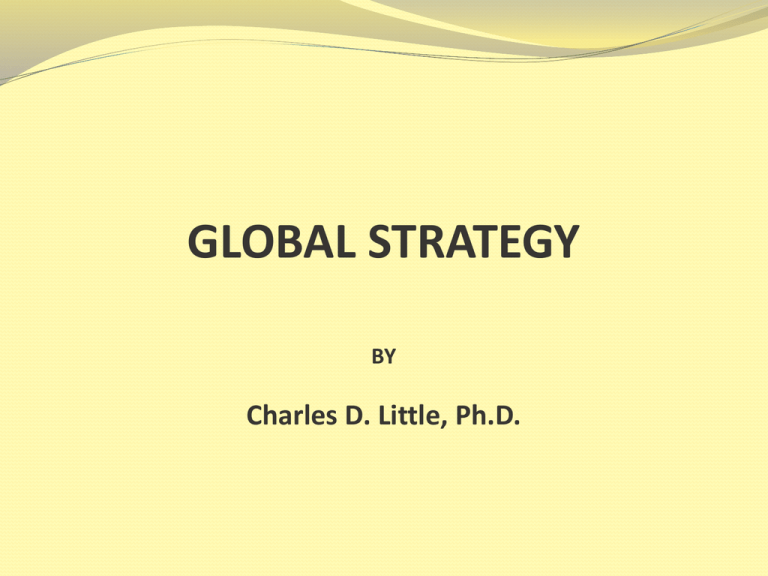
GLOBAL STRATEGY BY Charles D. Little, Ph.D. GLOBAL STRATEGY Why would a company want to do business in a foreign country? •To reach new market opportunities and new sources of revenue •Increasing demand for products and services world wide •More and more developing countries •Take advantage of new talent and diverse perspectives •Availability of new resources •Spread risk •Reduce costs •Further exploit its core competencies •Greater ability to understand and match the needs and demands of diverse market segments •Greater mobility •To maintain its competitive position •Expand to new dimensions of competition (socially, culturally, intellectually) •Improve the probability of survival in an expanding global economy •May be vital to an organization’s image in the marketplace •Essential for modern business GLOBAL STRATEGY What might be the risks of competing globally? •Government policies and politics •Fluctuating economy •Fluctuating currency exchange rates •Diminished control of product in channels of distribution •Theft or destruction of product, equipment and company infrastructure •Labor issues •Language and communication barriers •Cultural differences •Demographic differences •Illiteracy •Transportation and distribution •Market conditions GLOBAL STRATEGY New legislation spurred global competition •North American Free Trade Agreement (NAFTA) •Free trade agreements with developing countries •Various state and local legislative actions to spur foreign trade GLOBAL STRATEGY General facts •Since early 90’s, world trade has grown from $200 billion to $7 trillion •The U.S. exports about 1/5 of its industrial production; 1/3 of its farms products •1 in every 16 jobs in the U.S. is supported in some way by exports •1/3 of U.S. corporate profits is derived from international trade •Exports account for 25% of U.S. economic activity •Developing countries are now formidable competitors, i.e. Japan, China, India, with other countries in Europe, South America and Africa coming on fast •Gillette Corp. gets 2/3 of its revenue from its International Division •Frito-Lay grosses over $4 million from Japan alone •70% of GM’s revenue comes from outside the U.S. •Pillsbury sells more flour in India than in the U.S. •Gerber has found a substantial niche in Japan for baby foods that fit the Japanese culture , i.e. puréed flounder, spinach stew, wild duck cream stew *Yet, the U.S. is now experiencing a significant imbalance in trade GLOBAL STRATEGY Crafting a strategy to compete internationally…things to consider: •Cross country variations in growth: *demand *labor, technical, managerial, costs *supporting industries and suppliers *pattern of competition *growth rate of the country itself GLOBAL STRATEGY Crafting a strategy to compete internationally…things to consider: •Cross country variations in the value-chain: *location based advantages *lapses and breakdowns *lack of control *productivity *talent *costs GLOBAL STRATEGY Crafting a strategy to compete internationally…things to consider: •Cross country variations in government and politics: *potential for hostilities *political weaknesses and conflicts *acceptance of foreign businesses and industries *environmental requirements *approval of capital spending projects *taxation *regulations *availability of subsidies *local interest in the company *cost of labor *restrictions on exports GLOBAL STRATEGY Crafting a strategy to compete internationally…things to consider: •Cross country variations in economic policies and conditions: *rate of economic and industrial development *stability of the monetary system *fluctuations in the currency *lack of property rights *potential for loss of investment *inflation GLOBAL STRATEGY Crafting a strategy to compete internationally…things to consider: •Cross country variations in demographics and culture: *population sizes *variations in cultural norms, values and behavior *income levels and purchasing power *buyer tastes and cultural acceptance *local standards, i.e. electricity and other public services *promotional strategies and cultural acceptance *growth rate of the country GLOBAL STRATEGY Competing internationally – Strategic Approaches •Multi-domestic strategy: Products and competitive strategy vary dependent upon the country in order to be responsive to varying consumer preferences •Global strategy: Same basic competitive approach from country to country to build international brand and product awareness •Transnational strategy: Incorporates elements of multi-domestic and global strategies GLOBAL STRATEGY Strategies for entering foreign markets 1. Establish a one-country production base *Export only *Good initial strategy *Conservative *Minimizes initial investment (little to no direct investment in foreign countries) *Smart way to test new markets *Contract with experienced international channel members and distributors *Possible deployment of sales staff in primary target markets (and expand from there) *May open access to new markets in other countries *Risk some loss of control GLOBAL STRATEGY Strategies for entering foreign markets 2. Utilize a licensing strategy *Helps to extend positive technical expertise, an appealing brand or unique product *To avoid risks of committing resources and unfamiliar politics and economies *May license trademarks and production rights (to foreign licensees) *Avoid costs, but benefit from royalties *Risk the loss of some proprietary knowledge and information (technology, processes, marketing intelligence, etc.) *Used by many software, technological, and pharmaceutical companies GLOBAL STRATEGY Strategies for entering foreign markets 3. Utilize a franchising strategy *Similar to licensing *Ideal expansion strategy *Good to build a presence in foreign markets *Franchisee bears preponderance of costs and risks *Franchisor recruits, trains, supports, and monitors *Risk associated with cultural differences, quality, consistency, standardization (Some changes may be necessary to suit local tastes) *Used by many fast food, servicing, and retailing companies GLOBAL STRATEGY Strategies for entering foreign markets 4. Utilize an acquisition strategy *Ability to exercise relatively more control *Allows for speedy entry into the market *Become competitive faster *Good for broad, large scale entry *Achieve a strong presence in the market *Advantage of economies of scale *May be best strategy to overcome unfamiliar and difficult political and economic regulatory barriers GLOBAL STRATEGY Strategies for entering foreign markets 5. Utilize Greenfield venture strategies *Subsidiaries *Complete organizational setup and transfer of technology *Total control *Strategy can be modified as principals become accustomed to competition, market forces, business practices, culture, government, politics, economy, etc. *Utilize local management talent *Slower international entry strategy, i.e. capturing market strategy *Capital investment required *Long term ROI likely lucrative GLOBAL STRATEGY Strategies for entering foreign markets 6. Utilize alliance and joint venture strategies *Collaborative agreements with foreign companies *Another approach (strategy) to enter foreign markets *Especially useful in less developed countries *Take advantage of partners’ familiarity with buying habits, channel relationships, product preferences, etc. *Share risks *May ameliorate necessity for large investment *Allows use of partners’ established political relationships *Good way to edge into a foreign market and win approval from government *Offers access to complimentary resources *Share expertise, knowledge, technology, operational and manufacturing processes, and marketing (to fit cultures and traditions) *Often used in conjunction with exporting, franchising, or Greenfield GLOBAL STRATEGY Summary and Conclusions Times have changed drastically over the last 20 to 25 years; economically, financially, technically, politically, demographically. No longer do any of us nor does any company operate in a local economy even though we may think we do. Virtually all companies from small to large, even those that serve only small, local customer bases, operate in a global environment. The availability of materials, talent, and certainly financing is contingent on global influences and forces. Thus, companies are forced to think globally. As such, many are moving more and more into the international market place as a way to: 1. 2. 3. 4. 5. 6. 7. Gain access to new and attractive markets and find new revenue streams Extend brand recognition and broaden company image as a competitive strategy Reduce costs, increase purchasing power, take advantage of economies of scale Find new talent, knowledge, and diverse perspectives Leverage core competencies developed domestically Access new resource pools Spread risk over a wider market area THINK GLOBALLY!!
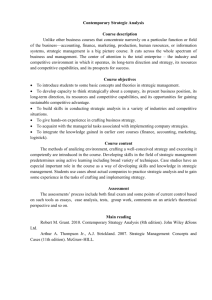
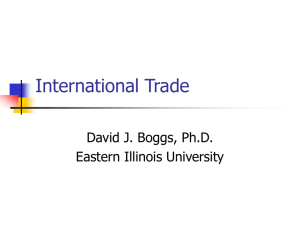

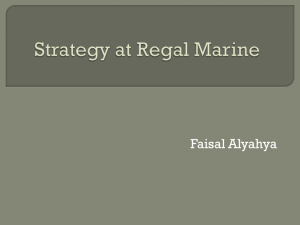

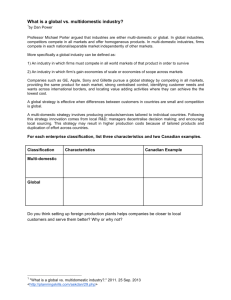

![Strategic Management Process [ PPT – 313 KB ]](http://s2.studylib.net/store/data/010103956_1-62ba32a889edaee1cb691f1ec7a63aa5-300x300.png)